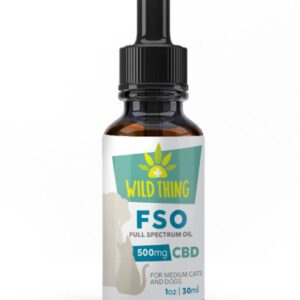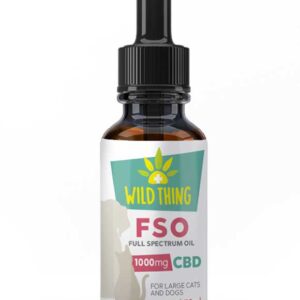It’s not something we are always ready to deal with. As pet owners, we are aware that there will be times and places where our pets could potentially injure themselves, but that doesn’t make it easier to deal with when it happens. Especially when there is blood involved. When we have a nosebleed, for the most part, we know how to handle it. Apply pressure to the bridge of the nose, maybe some ice, cram some tissue paper in our nostrils, tilt our heads back and wait for it to stop. It’s not as simple for dogs. If our dog has a bloody nose where do we put the tissue paper? Do we even use tissue paper? What if you have a smaller dog breed that doesn’t, exactly, have a snout to put ice on? All of these questions are a lot easier to answer now than they are in the heat of the bloody, messy moment. This article aims to answer the question of “what to do when your dog nose bleed” as well as what it could mean for our pet’s health.
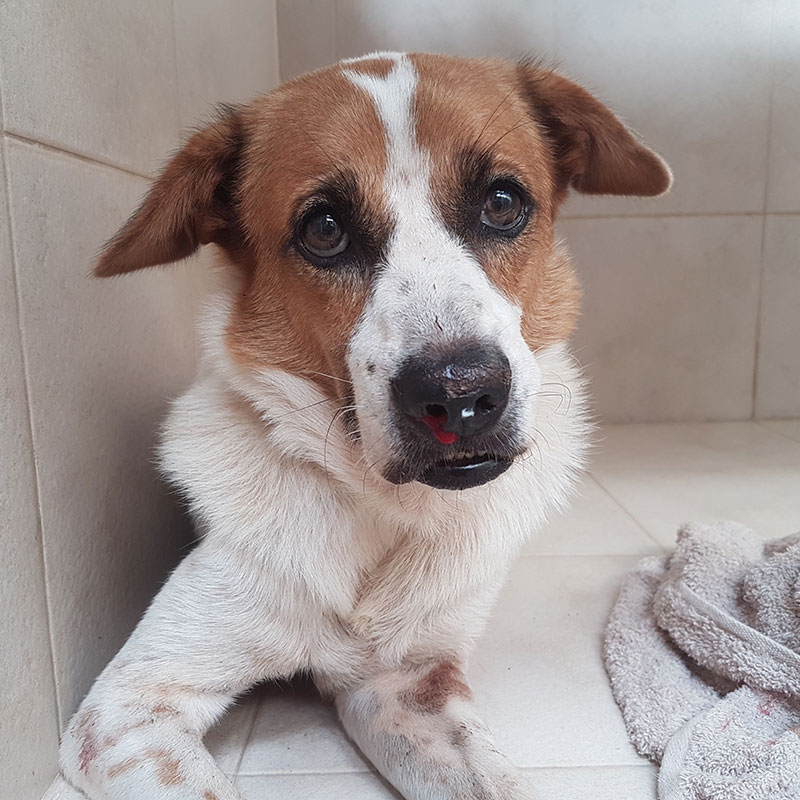
What Causes Epistaxis In Dogs?

Did you know that there is actually a term for your dog’s bloody nose? It’s called “Epistaxis”. Epistaxis is a type of nosebleed in dogs brought on by an acute hemorrhage from the nostril or nasal cavity. Just like in humans, dog nose bleeds that won’t stop can be caused by a number of different issues which we will outline later in this article. While dog nose bleeds (epistaxis) can be rather common, whenever you encounter this issue you should always consult your veterinarian to rule out any potentially serious causes of the event. Nosebleeds in dogs doesn’t always indicate something serious, but it’s always better to be safe than sorry. Stopping your dog’s nose bleed can be stressful for you and your pet, but once you’ve learned how to stop a dog’s nose bleed and you know the causes/symptoms of a nosebleed in your dog you’ll be better prepared to prevent/treat them in the future.
My Dog’s Nose Is Bleeding… Now What?
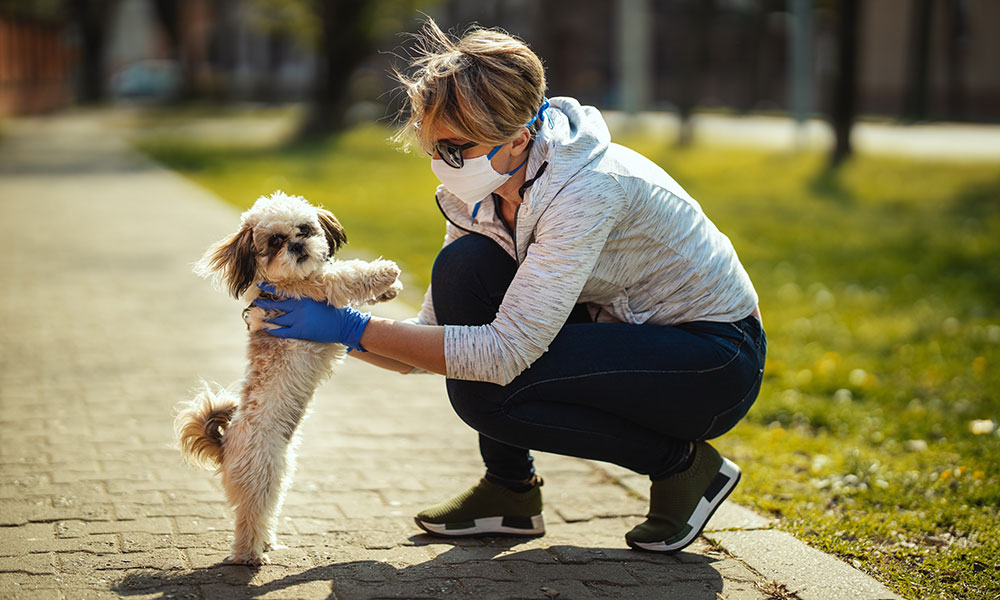
You are relaxing in your back yard or living room when suddenly your dog comes rushing up to you, blood on their face. Your immediate reaction is likely one of shock and confusion while your dog continues to be their jovial self. Odds are the cause of the nosebleed is on the less serious side. Our dogs are playful, adventurous creatures that rarely question the safety of an undertaking before they do it. If your dog nose bleed or sneezing blood, odds are a foreign object is the culprit. Something as simple as a blade of grass or foxtails getting lodged in the nasal cavity could be the catalyst behind your dog nose bleed. Even for something as seemingly harmless as that, you should still schedule a vet visit to be safe.
Another cause of your dog’s bleeding nose could be the fact that they are a little accident prone. Have you ever seen a dog take a light-speed corner on a linoleum or hardwood floor? They are not, always, the most graceful of creatures. Bumping their snout into a doorway or table is another likely, and rather common, cause of a nosebleed in dogs and other pets. The fact that it is common, however, does not necessarily mean that it can’t be a serious problem. A bump could fracture, bruise or otherwise have harmed something in their snout or nasal cavity and, again, a vet visit should be scheduled to rule out any other possible issues.
While most causes of a dog’s nosebleed can be chalked up to clumsiness or some type of foreign object they were investigating, discovering why dogs bleed from the nose can be stressful. Trying to learn how to stop a nosebleed in a dog is easier said than done, especially if they’re young and rambunctious. Dog nose bleeds that won’t stop can also be caused by more serious issues. One of the first things you should pay attention to when investigating your dog’s bleeding nose is: Is it a bilateral or unilateral bleed. That will be a good indicator of the deeper cause behind the bleed. Unilateral nose bleeds are when the blood is only flowing out of one nostril. This is, usually, an indicator that your dog may be suffering from some type of infection. Most commonly a tooth infection. This is likely caused by the infection or growth irritating the side of the bleed. The odds of that infection being fatal are low, but a vet visit should also be scheduled just to be safe.
However, if your dog is suffering from what appears to be a bilateral nosebleed, meaning the blood is flowing from both nostrils, this could indicate a more serious underlying issue. A Bilateral bleed could be indicating a clotting disorder, respiratory issues, an infection caused by fungus or some type of trauma. The causes for a nosebleed can be longer to read than the nosebleed itself will last. Hypertension, tumors inside the nasal passage, coagulation disorders, protein levels, infections and so on are also causes of a nosebleed in dogs. During the event of any type of nosebleed, it is always best that you schedule a veterinarian visit as soon as possible to gauge the severity of the bleed and whether or not special steps will need to be taken. In the event that your dog nose bleed, an emergency veterinarian visit should be scheduled.
Another cause of dog nose bleeds, unfortunately, can stem from your dog getting into rat poison or a rat/mouse that has previously ingested rat poison. This cause is relatively easy to rule out, if you know there are no rat traps or poison pods in your home or yard then your dog should be safe, however if you are unsure or think that may be the cause, an immediate emergency veterinarian visit must be scheduled. This cause is not always fatal, but runs a higher risk of death than the other causes listed within this article. It’s very important that you understand why your dog is bleeding from its nose, not just that you know how to stop a dog’s nose bleed as quickly as possible. Investigating the underlying causes/effects can go a long way towards preventing dog nose bleeds that won’t stop in the future.
Epistaxis Treatment – How to Stop a Dog Nose Bleed
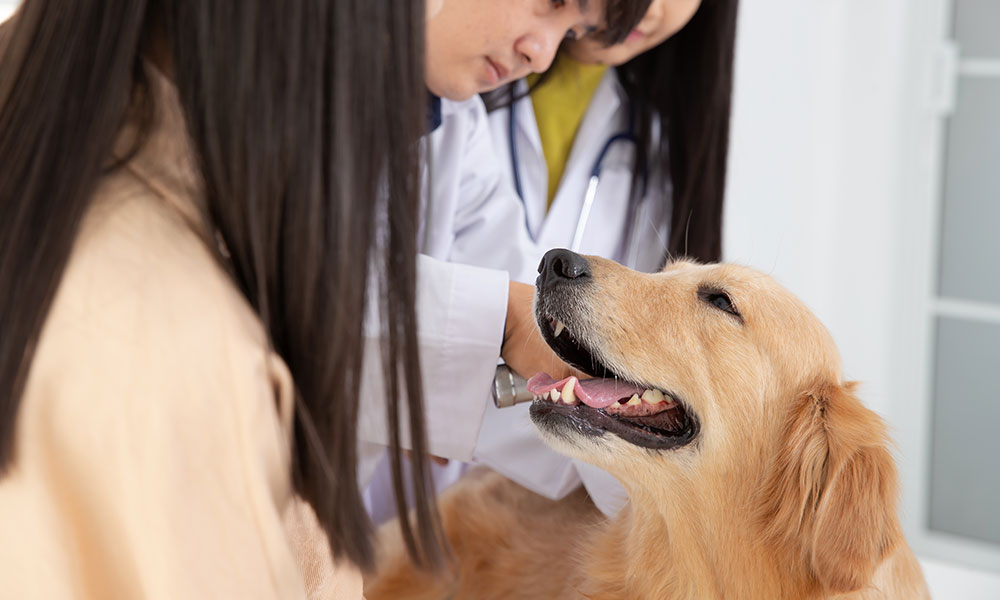
Like we mentioned above, the age-old remedy for a nosebleed is usually to tilt your head back and apply pressure to the bridge of the nose. But where is the bridge of a dog’s nose? Do you hold their head up? Is there a way to learn how to stop a dog nose bleed without causing your pup stress? Trying to stop the bleeding yourself can be difficult on it’s own, but even more so with an overly excited dog. The first step to work towards stopping the bleeding, or any type of ailment, should be to create a calm space for your dog. If your dog is becoming too scared or excited, it will elevate their heart rate, blood pressure and increase the flow of blood.
Once you have managed to calm your dog down to the best of your ability you can try adding ice to the bridge of your dog’s snout. The best way to do this, without freezing your pooch, is to take some ice – bagged or cubed it doesn’t matter – and put it into a freezer bag. If you don’t have a freezer bag, that’s okay, you just might get some water on the dog and/or floor. Once you have the ice, wrap it up with a clean dish towel and gently place the homemade ice pack on the bridge of your dog’s nose. If you have a Shih Tzu, Pug or any other dog with a smaller snout, be mindful that you don’t cover the whole snout. Make sure they can still adequately breathe while you apply light pressure. The sudden cold of the ice pack should restrict the blood vessels in the nasal passages and begin working to slow the flow of blood so that it can coagulate and eventually stop. Once the bleeding has stopped and you are confident it won’t begin again, schedule a vet appointment.
Conclusion

Of all the causes and solutions that we have laid out in this article, the common thread throughout is that you should always take your dog to a vet after a nosebleed. Once you understand how to stop a dog’s nose bleed or you’re sure what caused your dog’s nose bleed, try to check for other potential instigators. Foreign objects, trauma and infections are the main causes and all three should be met with medical attention once the bleeding has stopped. Needing to remove the foreign object is best left to a professional with the training and tools needed to do so with as little stress and pain to your dog as possible. A tooth abscess or infection will need dental attention to have it removed immediately, while trauma could seem insignificant and have more serious consequences underneath the skin. As pet owners, we can only do so much. We work tirelessly to ensure our pets are happy and that we keep them out of harm’s way. But we can’t be everywhere at all times. Remember to stay calm, assess the situation, calm your dog to the best of your ability and follow up any type of nosebleed with a visit to your vet. Even if the bleed is caused by something harmless, it is always better to be safe than sorry when it comes to the lives of our pets.
Frequently Asked Questions (FAQ)
How do you stop a dog nose bleed?
The best way to stop a dog’s nose bleed is to calm them, place crushed or cubed ice into a bag and wrap it with a towel before applying it to the bridge of their nose. After a few minutes the cold should restrict the blood vessels enough that the bleeding should subside. Once the bleeding has stopped, contact a vet immediately.
How long does a dog nose bleed last?
That depends on the severity and cause of the bleed. Foreign objects like grass or foxtails can cause a short bleed that will run its course over a few minutes, while a tooth abscess or infection could last longer or until the infected tooth can be removed.
What does it mean when a dog sneezes blood?
If your dog is sneezing or coughing blood it can be a sign of an infection to the respiratory system, possible ingestion of a toxin, injury or an undiagnosed health issue. Not all are life threatening, but should be followed up with a veterinarian visit once the bleeding has subsided.
What do I do if my dog nose is bleeding?
Remain calm, apply pressure and ice (wrapped in a cloth) to their nose, careful not to obstruct the nostrils in smaller dogs, and wait for the bleeding to stop. Once it has, you can schedule a vet visit to determine no serious underlying health issues.



